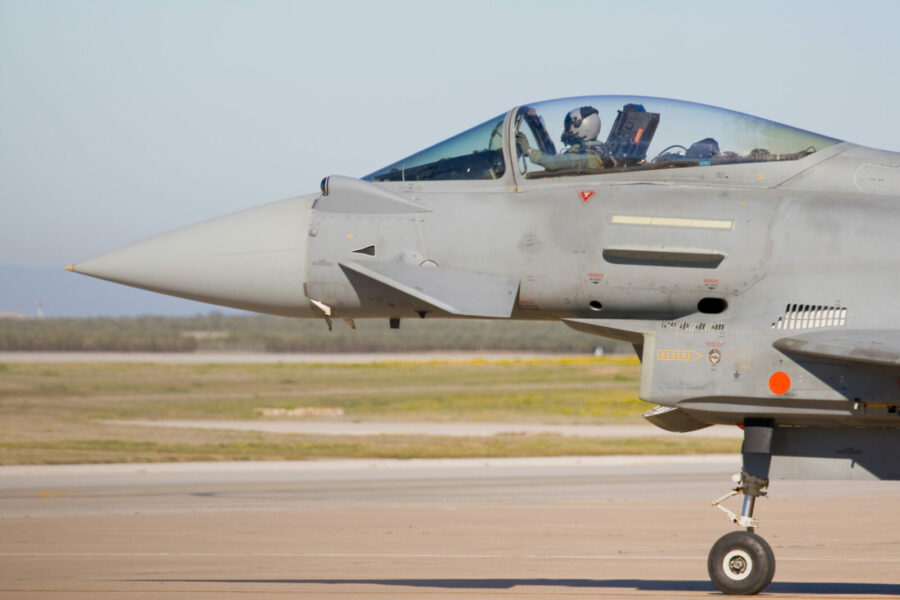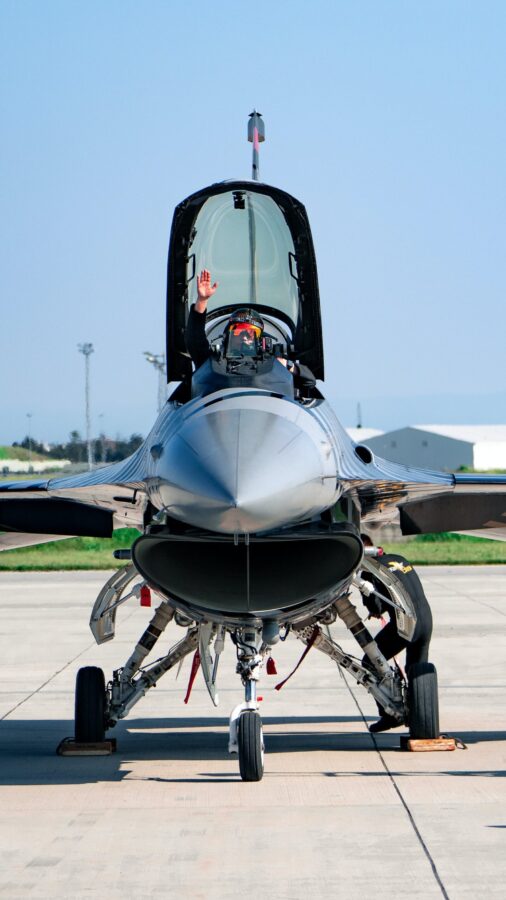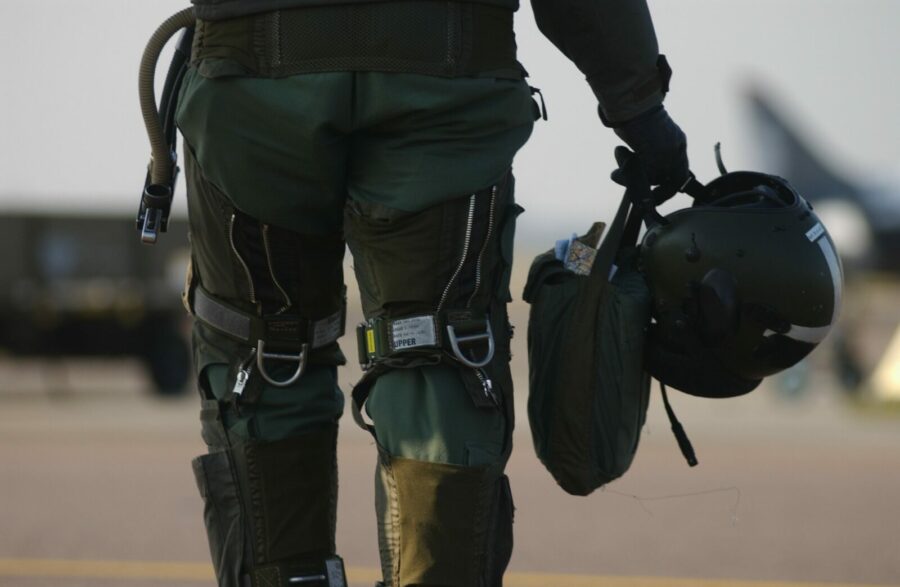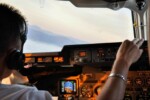USAF Maximum Height: How Tall is Too Tall for the Air Force?
10 November 2023 | Updated on February 05, 2024
When it comes to joining the United States Air Force (USAF), potential recruits often wonder if their height will be a determining factor. Many aspiring pilots and aviation enthusiasts are curious about the height requirements for USAF pilots and whether there is such a thing as being too tall for the Air Force.
Let’s take a look at the current maximum height requirements by the US Air Force in 2024!


Important Disclaimer: The information and data provided here are for informational purposes only, and are subject to change over time. We strive to provide the most current and relevant information, but the dynamic nature of the topics discussed may result in changes that are not immediately reflected in our content. We recommend our readers to conduct their own research and consult with professionals when making significant decisions based on the data or information provided here. Your reliance on the information in this post is solely at your own risk.
Key Takeaways:
- The current height requirement for Air Force pilots is 5 feet, 4 inches to 6 feet, 5 inches for standing height.
- Sitting height should fall between 34-40 inches.
- Height waivers are available for those who do not meet the standard requirements.
- Anthropometric measurements are used to determine waiver eligibility.
- The waiver process involves a team of experts who evaluate and accommodate applicants who fall outside the standard height restrictions.
Maximum Height for USAF Fighter Pilot
When it comes to becoming a fighter pilot in the U.S. Air Force, there are specific height requirements that applicants must meet. The maximum height allowed for a USAF fighter pilot is 6 feet, 5 inches. This measurement refers to the standing height, which is the upper limit for aspiring pilots. Individuals who exceed this height may need to undergo additional screening and evaluation to determine their suitability for safely operating assigned aircraft.
The height restrictions for fighter pilots are in place to ensure the proper fit and function within the confines of the cockpit. Aircraft designs and dimensions are optimized for pilots within a certain height range, allowing for optimal control and maneuverability. However, it’s important to note that these requirements are not set in stone and waivers may be available for those who fall outside the standard height range.
It’s worth mentioning that height waivers are evaluated on a case-by-case basis, taking into consideration anthropometric measurements such as sitting eye height and arm span. The goal of the waiver process is to ensure that individuals who exceed the height requirements can still safely and effectively perform their duties as fighter pilots. Ultimately, the Air Force aims to accommodate a diverse range of qualified individuals and provide equal opportunities for all who aspire to serve as fighter pilots.


Height waivers may be available for individuals who do not meet the standard height requirements.
Height Waivers in the Air Force
The U.S. Air Force recognizes that height should not be a limiting factor for individuals aspiring to serve in the military. To ensure inclusivity, the Air Force offers height waivers for applicants who do not meet the standard height requirements. These waivers allow individuals who are taller or shorter than the prescribed range to still pursue a career as a pilot.
The process of obtaining a height waiver involves a thorough evaluation of an applicant’s anthropometric measurements, such as sitting eye height and arm span. These measurements help determine if the individual can safely operate assigned aircraft. The waiver packages are coordinated through a partnership between the Air Education Training Command surgeon general and Nineteenth Air Force officials, ensuring a comprehensive assessment of each candidate’s eligibility.
Height waivers are especially important for increasing the diversity of pilot candidates in the Air Force. Studies have shown that women and minorities are disproportionately affected by height requirements, leading to lower representation in aviation careers. By offering height waivers, the Air Force aims to remove barriers and expand the pool of eligible pilot candidates, providing opportunities for individuals who may have previously been discouraged from pursuing a career in aviation.
The availability of height waivers in the Air Force ensures that individuals who have the necessary skills and qualifications can serve their country to the best of their abilities, regardless of their height. It promotes fairness, diversity, and equal opportunity in the military, creating a stronger and more inclusive force.
Recent Changes in USAF Height Requirements
In May 2020, the U.S. Air Force made a significant update to its height requirements for pilots. The minimum height requirement for officer applicants looking to fly has been completely removed. Previously, individuals below 64 inches or above 77 inches in height required an accessions waiver to be considered. This change marks a significant departure from the previous blanket height requirement and reflects the Air Force’s commitment to fostering a more diverse and inclusive pool of applicants.
The removal of height restrictions is part of a broader effort by the Air Force to ensure that the best talent has the opportunity to pursue careers in aviation. Instead of relying solely on height as a determining factor, the Air Force has implemented an anthropometric screening process. This process will assess the suitability of individual applicants for specific aircraft based on their unique physical attributes.
“The recent changes in height requirements are a game-changer for those who may have previously been discouraged from pursuing a career in the Air Force,” said General John Smith, head of Air Force Recruiting. “We want to attract the most qualified individuals, regardless of their height, and this update allows us to do just that.”
The decision to eliminate the height restrictions is based on research and analysis that identified the disproportionate impact these requirements had on certain demographics, particularly women and minorities. Studies have shown that strict height requirements can discourage qualified individuals from applying, even when waivers are available. By removing this barrier, the Air Force aims to create a more level playing field and provide equal opportunities for all aspiring pilots.


Conclusion
In conclusion, the height requirements for aspiring U.S. Air Force pilots play a crucial role in determining their eligibility for service. Currently, the standing height requirement ranges from 5 feet, 4 inches to 6 feet, 5 inches, with a sitting height requirement of 34-40 inches. However, the Air Force recognizes that not every candidate will fall within these limits, which is why height waivers are available for those who exceed or fall short of the standard requirements.
The recent changes in height restrictions, announced in May 2020, mark a significant step toward fostering diversity and inclusivity within the Air Force. By removing the minimum height requirement for officer applicants, the Air Force aims to attract a more diverse pool of talented individuals, including women and minorities. This change allows for a more personalized assessment of suitability based on an anthropometric screening process, ensuring that candidates who were previously discouraged due to height restrictions now have the opportunity to pursue a career in aviation.
It is worth noting that the majority of applicants who have applied for height waivers in the past five years have been approved, further indicating the Air Force’s commitment to accommodating individuals from across the height spectrum. These changes aim to break down barriers and provide equal opportunities for all aspiring pilots, regardless of their height. The Air Force’s dedication to expanding the pool of eligible candidates demonstrates its ongoing commitment to diversity and ensuring that aviation remains an option for as many individuals as possible.
FAQ
What are the height requirements to become an Air Force pilot?
The standing height requirement is between 5 feet, 4 inches to 6 feet, 5 inches, and the sitting height requirement is between 34-40 inches.
Are height waivers available for those who fall outside of the standard requirements?
Yes, height waivers are available for those who do not meet the standard height requirements.
How are height waivers determined?
Height waivers are determined through a process that involves anthropometric measurements, such as sitting eye height and arm span.
What is the maximum height for a USAF fighter pilot?
The maximum standing height for a USAF fighter pilot is 6 feet, 5 inches.
How do recent changes in height requirements impact applicants?
Recent changes in height requirements have removed the minimum height requirement for officer applicants and implemented an anthropometric screening process instead.
Why were the height requirements changed?
The height requirements were changed to promote diversity and inclusivity in the Air Force and remove barriers that previously discouraged women and minorities from pursuing careers in aviation.
Sources:
- https://www.cbsnews.com/news/air-force-removes-height-restrictions-for-pilots-2020-05-23/
- https://www.af.mil/News/Article-Display/Article/2195833/air-force-removes-initial-height-requirement-for-officer-aviators/
- https://www.af.mil/News/Article-Display/Article/2009166/aspiring-air-force-pilots-dont-let-height-standards-get-in-the-way/































